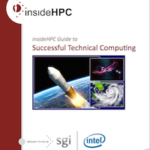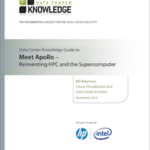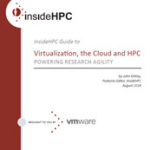This paper offers those considering HPC, both users and managers, guidance when considering the best way to deploy an HPC solution. Three important questions are suggested that help determine the most appropriate HPC design (scale-up or scale out) that meets your goal and accelerates your discoveries.
High Performance Computing Technology
Organizations that implement high-performance computing (HPC) technologies have a wide range of requirements. From small manufacturing suppliers to national research institutions, using significant computing technologies is critical to creating innovative products and leading-edge research. No two HPC installations are the same. For maximum return, budget, software requirements, performance and customization all must be considered before installing and operating a successful environment.
Cray XC ® Series Network
The Cray XC series is a distributed memory system developed as part of Cray’s participation in the Defense Advanced Research Projects Agency’s (DARPA) High Productivity Computing System (HPCS) program. Previously codenamed “Cascade,” the Cray XC system is capable of sustained multi-petaflops performance and features a hybrid architecture combining multiple processor technologies, a high performance network and a high performance operating system and programming environment.
Meet Apollo – Reinventing HPC and the Supercomputer
Administrators, engineers and executives are now tasked with solving some of the world’s most complex challenges. This could revolve around advanced computations for science, business, education, pharmaceuticals and beyond. Here’s the challenge – many data centers are reaching peak levels of resource consumption; and there’s more work to be done. So how are engineers and scientists supposed to continue working around such high-demand applications? How can they continue to create ground-breaking research while still utilizing optimized infrastructure? How can a platform scale to the new needs and demands of these types of users and applications. This is where HP Apollo Systems help reinvent the modern data center and accelerate your business.
External Aerodynamics with Cray Systems
Cray and Altair are leaders in providing the powerful, usable technology engineers need to perform external aerodynamics analysis with greater speed and accuracy. With Altair’s HyperWorks Virtual Wind Tunnel running on Cray XC30 or CS300 systems, manufacturers of all sizes can now predict a vehicle’s external aerodynamic performance and improve the cooling, comfort, visibility and stability features in their designs — without the need for numerous physical wind tunnel tests.
Unified Computing System with Cisco
When used together, Bright Computing and Cisco Systems provide a complete, integrated HPC Ethernet solution that decreases the amount of time IT managers, administrators, and users spend managing a complex collection of vendors, networks, and hardware. With improved focus on results, productivity increases, and costs decrease.
The insideHPC Guide to Co Design Architecture
The use of Co-Design and offloading are important tools in achieving Exascale computing. Application developers and system designers can take advantage of network offload and emerging co-design protocols to accelerate their current applications. Adopting some basic co-design and offloading methods to smaller scale systems can achieve more performance on less hardware resulting in low cost and higher throughput. Learn more by downloading this guide.
insideHPC Guide to Virtualization, the Cloud and HPC Powering Research Agility
The combination of virtualization and cloud computing provides value to both the end users and IT providers in HPC and enterprise environments. And, once created, these private clouds can be burst to a hybrid cloud to create seamless and secure extensions of the organization’s on-premise infrastructure. Performance is the key. Read this informative guide to learn more.











